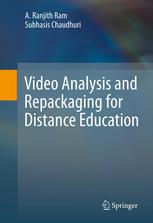

Most ebook files are in PDF format, so you can easily read them using various software such as Foxit Reader or directly on the Google Chrome browser.
Some ebook files are released by publishers in other formats such as .awz, .mobi, .epub, .fb2, etc. You may need to install specific software to read these formats on mobile/PC, such as Calibre.
Please read the tutorial at this link: https://ebookbell.com/faq
We offer FREE conversion to the popular formats you request; however, this may take some time. Therefore, right after payment, please email us, and we will try to provide the service as quickly as possible.
For some exceptional file formats or broken links (if any), please refrain from opening any disputes. Instead, email us first, and we will try to assist within a maximum of 6 hours.
EbookBell Team

0.0
0 reviewsThis book presents various video processing methodologies that are useful for distance education. The motivation is to devise new multimedia technologies that are suitable for better representation of instructional videos by exploiting the temporal redundancies present in the original video. This solves many of the issues related to the memory and bandwidth limitation of lecture videos. The various methods described in the book focus on a key-frame based approach which is used to time shrink, repackage and retarget instructional videos. All the methods need a preprocessing step of shot detection and recognition, which is separately given as a chapter. We find those frames which are well-written and distinct as key-frames. A super-resolution based image enhancement scheme is suggested for refining the key-frames for better legibility. These key-frames, along with the audio and a meta-data for the mutual linkage among various media components form a repackaged lecture video, which on a programmed playback, render an estimate of the original video but at a substantially compressed form. The book also presents a legibility retentive retargeting of this instructional media on mobile devices with limited display size. All these technologies contribute to the enhancement of the outreach of distance education programs. Distance education is now a big business with an annual turnover of over 10-12 billion dollars. We expect this to increase rapidly. Use of the proposed technology will help deliver educational videos to those who are less endowed in terms of network bandwidth availability and to those everywhere who are even on a move by delivering it effectively to mobile handsets (including PDAs). Thus, technology developers, practitioners, and content providers will find the material very useful.